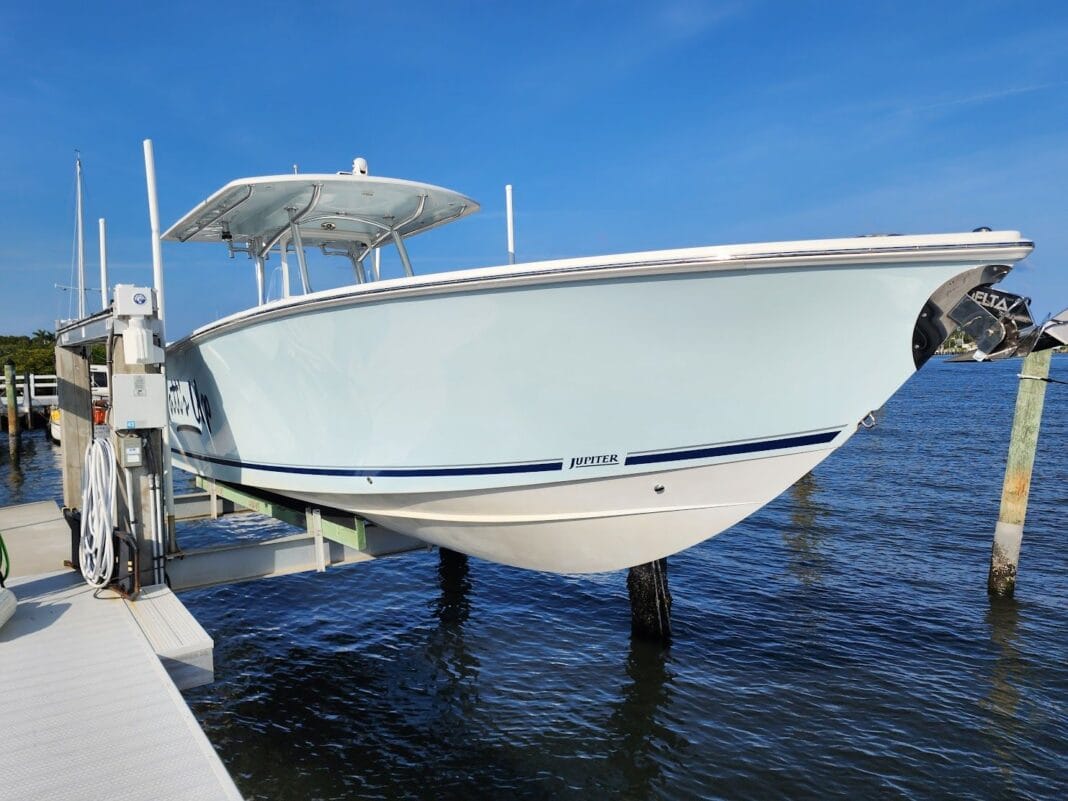Searching for a second-hand boat can be economical, but it comes with some risks–one of the greatest being hull damage. This article delves into critical factors for spotting potential problems under the surface, from inspecting methods to warning signs and detection tools. Step aboard and prepare to uncover the hidden threats lurking beneath the craft’s exterior.
Gain Insights Into Hull Construction
The secrets behind the meticulous construction of a boat’s hull can be difficult to uncover. But, with the right knowledge and appreciation, it rewards us with a reliable boat that’s ready to hit the open waters. So, let’s dive in and explore how each component works together to create a resilient structure.
At the foundation of the hull lies an intricate framework of stringers and bulkheads. Stringers are long, horizontal beams that stretch across the entire body of the boat, providing stability and strength to its frame. Depending on its design and purpose, these are typically made from materials like wood, aluminum, or fiberglass. Meanwhile, bulkheads–vertical partitions– distribute this strength throughout the hull by dividing it into separate compartments. This allows for more effective load bearing capabilities and improved safety under harsh conditions.
Once the framework is set, layers of fiberglass or other composite materials are applied over it, creating an exterior surface that is both smooth and watertight. From here, even greater detail can be added through custom paint work and additional cosmetic touches.
This careful craftsmanship ensures that your boat will remain strong against whatever nature throws at it–no matter what type of maritime activities you choose to pursue.
Look Into the Structure
The first step to discovering a used boat’s hidden secrets is to give it a thorough visual inspection. Here are the telltale signs to scrutinize for while assessing its hull condition:
General Exterior Appearance
- Look for cracked, chipped, or peeling paint, which may indicate underlying structural issues.
- Blisters may point to an osmotic process that affects the hull’s integrity.
- Check for dents or deformations that could be due to impacts and connected to internal damage.
Deck and Hull-to-Deck Joint
- Soft spots or moist areas may mean rot or delamination in wood or fiberglass structures and should be checked out.
- Inspect the hull-to-deck joint for any gaps, cracks, or excessive movement.
- Excessive caulking may signify the joint has been compromised and should be noted.
Hull Bottom
- Evaluate the condition of the keel, particularly for signs of impact damage, separation from the hull, or rust (in metal boats).
- Also look over the rudder and its attachment points for any cracks or loose fittings.
- Any signs of grounding or abrasion, such as scarring or grooving in the bottom paint should be taken note of.
Dive Deep Into Structural Inspection
An in-depth investigation of the structural integrity could uncover hidden issues that were not visible to the naked eye. To truly know the condition of the boat, an experienced marine surveyor can be brought in to thoroughly inspect it from the hull up. Lifting the boat from the water and placing it on a trailer will give you more leverage to thoroughly examine any issues. So, take the time to inspect it and prevent problems in the future:
Transom
- Examine the boat for excessive give, particularly in boats with outboard motors or swim decks.
- Look over wood or composite materials for evidence of decay or separation.
Stringers and Bulkheads
- Run your hands over these components to detect any soft spots or areas of give, which could point to unseen damage within.
- Inspect the structures for any signs of repair, which may reveal prior troubles or poor craftsmanship.
Hull-to-Stringer Bonding
- For wooden or composite boats, listen for places that seem to have an empty resonance when tapped on the hull.
- In metal boats, look for any evidence of corrosion or disintegration in the welds and screws connecting the stringers/bulkheads to the hull.
Recognize Tools to Uncover Hull Woes
Inspecting a used boat can be a daunting task, but with the right tools, you will be able to uncover any issues that may lurk beneath its shiny exterior. Here are tools to use:
Moisture Meters
Taking the guesswork out of detecting wet or decomposing wood and fiberglass structures, these devices efficiently measure the moisture levels of various materials.
Tap and Hammer Tests
Using a hammer to tap along the hull gives you valuable feedback about what lies beneath its surface. An expert ear can detect if there are hollow spots or layers of delamination that would otherwise remain hidden.
Ultrasonic Thickness Gauges
Onboard metal boats, these devices measure the thickness of the hulls with precision. Measuring the slightest hint of corrosion or material loss, they are a vital tool for identifying potential dangers early and helping to protect both boat and crew.
Final Thoughts
Regular upkeep and checks are absolutely essential for safeguarding your pre-owned boat. Be on the lookout for common hull issues and take heed of any red flags that may appear! It’s best to seek out a marine surveyor for their expertise and evaluation in order to protect yourself from expensive repairs or tragic accidents. They have the know-how and experience to accurately assess the strength of your boat, so make sure you get it right the first time.


